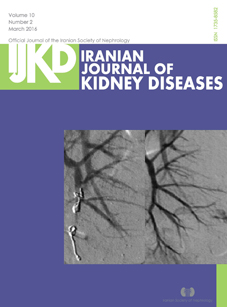Liver and Cardiac Iron Deposition in Patients on Maintenance Hemodialysis by Magnetic Resonance Imaging T2*
Abstract
Introduction. Magnetic resonance imaging (MRI) sequence acquisition techniques for iron assessment have revolutionized the study of iron overload in different organs. We hypothesized that MRI can accurately and reliably assess possible iron deposition in the myocardium and liver by measurement of T2* value.
Materials and Methods. Seventeen patients with end-stage renal disease on hemodialysis were enrolled. An electrocardiography-gated single breath hold fast multiecho T2* sequence was acquired in the short axis at basal and mid-ventricular levels. The same technique was utilized to estimate liver parenchyma iron content.
Results. Iron deposition in the liver was present in 50% of the hemodialysis patients. No iron deposition was found in the myocardium. A strong univariable inverse linear association was detected between serum albumin and T2* in the liver (r = -0.84, P < .001). Patients who had been on dialysis for 10 years and longer had a 91% reduction in their odds of developing iron overload in the liver compared to the referent group (exact odds ratio, 0.09; P = .048).
Conclusions. Even though using intravenous iron infusion is a common practice in chronic dialysis patients, it seems the myocardium as opposed to the liver is resistant to or protected against iron deposition. There were no meaningful differences in the relationship between iron overload in the liver and the dialysis time vintage. A more aggressive trend of iron therapy and different formulations of iron infusion could be an explanation of iron deposition in the liver.


